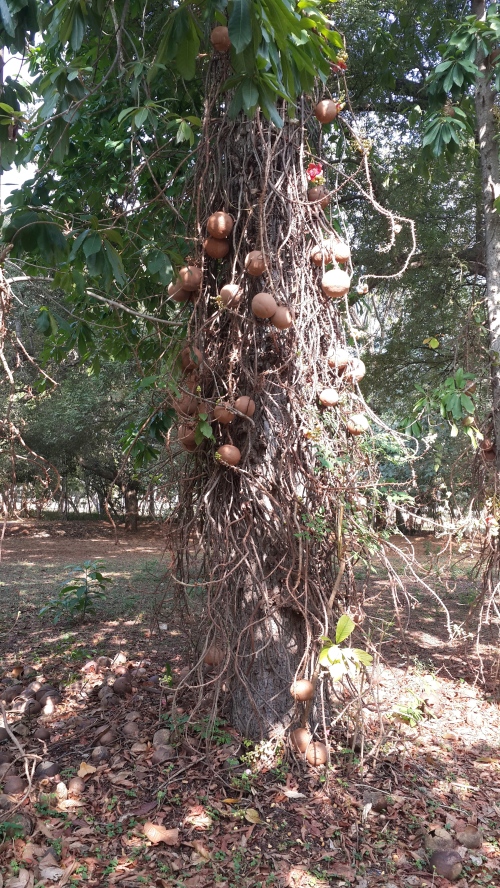Sounds like a strange mix, but the caption above is easily explained. The international headquarters of the Theosophical Society occupies an area of 104 hectares (260 acres) of wooded land. Nearly 15 acres of this land is occupied by just one tree, a 450 year old banyan that has had room to spread within the protected grounds.
 The Theosophical Society was founded in New York in 1857 by Helena Blavatsky with several others. Madame Blavatsky was a widely travelled, spiritually inclined, well-read Russian emigre. She came from a privileged, aristocratic background but reputedly had a strong egalitarian streak and eschewed any notions of superiority based on birth or race. The Society aimed to foster the universal brotherhood of humanity, without distinction of race, creed, sex, caste or color. In 1875 the Theosophical Society moved its headquarters to the present campus that lies alongside the banks of the Adyar river in Chennai, about a mile before it reaches the sea.
The Theosophical Society was founded in New York in 1857 by Helena Blavatsky with several others. Madame Blavatsky was a widely travelled, spiritually inclined, well-read Russian emigre. She came from a privileged, aristocratic background but reputedly had a strong egalitarian streak and eschewed any notions of superiority based on birth or race. The Society aimed to foster the universal brotherhood of humanity, without distinction of race, creed, sex, caste or color. In 1875 the Theosophical Society moved its headquarters to the present campus that lies alongside the banks of the Adyar river in Chennai, about a mile before it reaches the sea.
Although largely unknown, the Theosophical Society has had major impact on world affairs. For example, the Indian National Congress, today one of the two major political parties in India, was started by, among others, AO Hume, a Scotsman and prominent member of the society. The New Age movement reflects many of its characteristics, including holism and eclecticism. In 1902 Rudolf Steiner became General Secretary of the Austrian/German branch of the Society. Philosophical differences between this branch and the international leadership under Annie Besant arose and the faction under Rudolf Steiner founded the Anthroposophical Society, an attempt to bridge the gap between science and spirituality. The movement is better known today as the philosophical underpinning of the Steiner/Waldorf school system.
 The extensive gardens of the Theosophical Society and the nearby estuary where the Adyar River meets the sea are home to a wealth of plants and birds, including pipits, lapwings, curlews, golden orioles and parakeets. There are more than 100 tree species, including several cannonball trees (above) with their spectacular fruit that grow straight off the trunk and are hard and heavy enough to kill anyone thoughtless enough to sit under one. The tree is considered sacred in India because the flower petals (click on the image above to enlarge it) resemble the hood of a Naga, a sacred snake.
The extensive gardens of the Theosophical Society and the nearby estuary where the Adyar River meets the sea are home to a wealth of plants and birds, including pipits, lapwings, curlews, golden orioles and parakeets. There are more than 100 tree species, including several cannonball trees (above) with their spectacular fruit that grow straight off the trunk and are hard and heavy enough to kill anyone thoughtless enough to sit under one. The tree is considered sacred in India because the flower petals (click on the image above to enlarge it) resemble the hood of a Naga, a sacred snake.




[…] Theosophy in India blog post: https://aviott.org/2014/02/19/banyans-cuckoos-cannonballs-and-theosophy/ […]